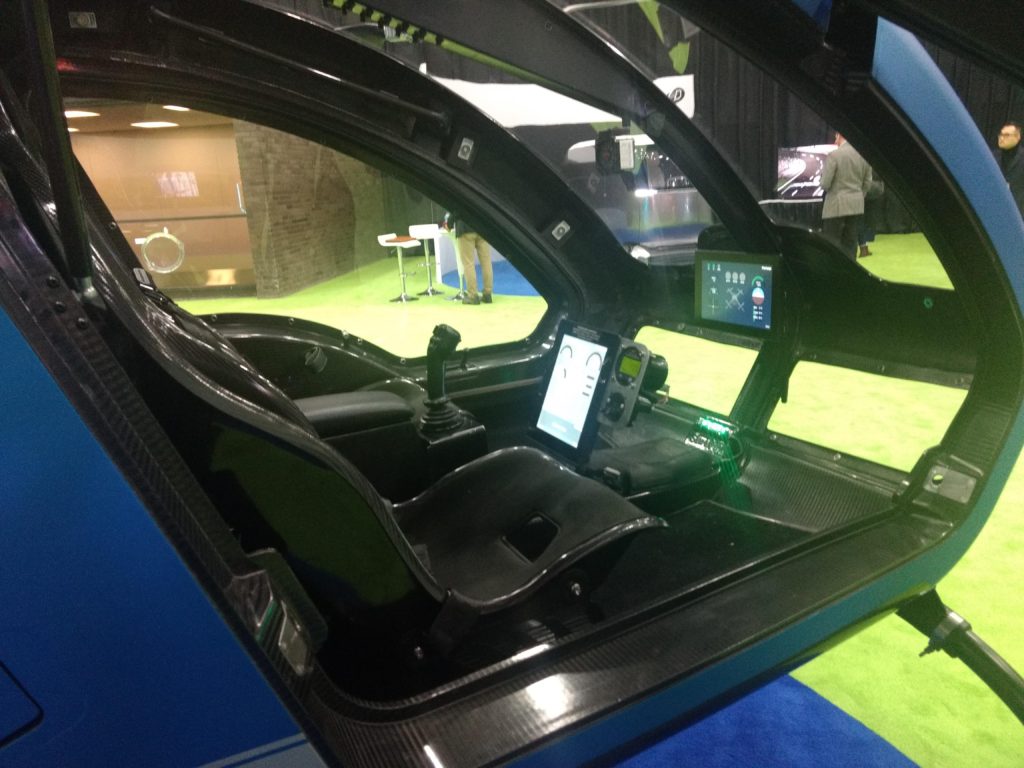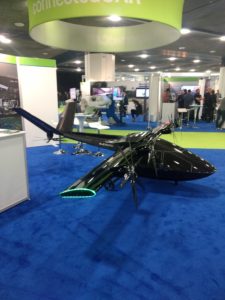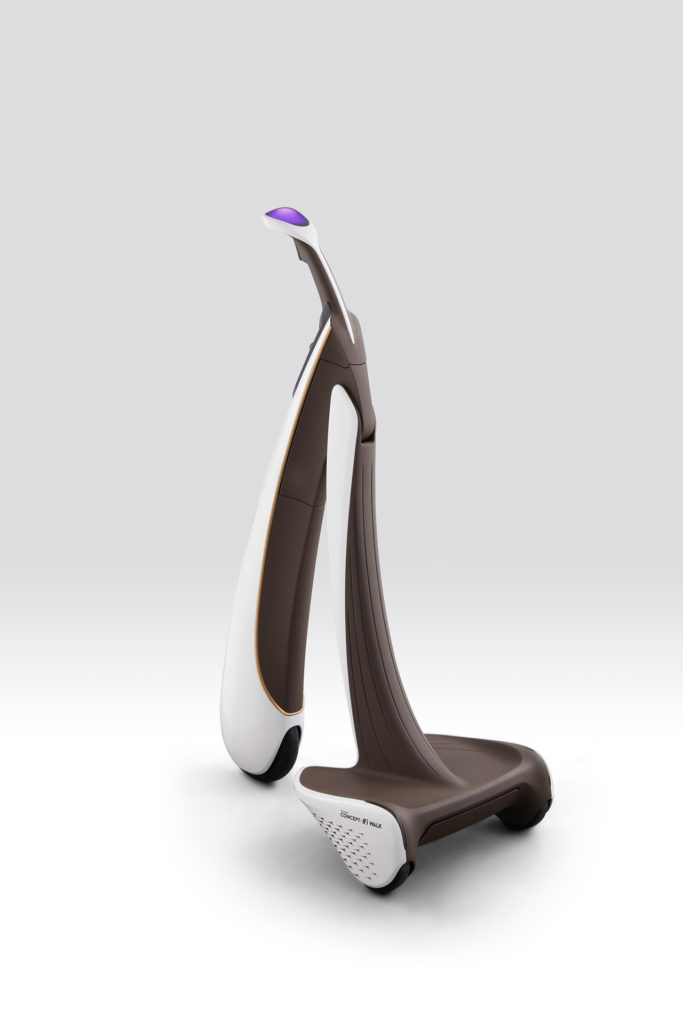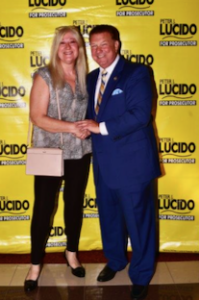
Saturday mornings wouldn’t have been complete without a sugary bowl cereal watching George Jetson zoom around the clear blue skies in his flying model 2062 car. It’s almost unimaginable that we are close to experiencing something as fantastic like this today.
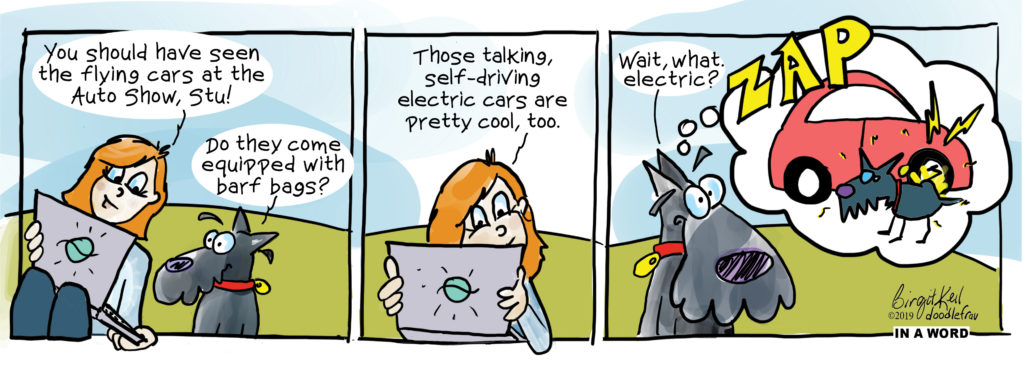
In walking into the NAIAS 2019 you’ll be dazzled by the display of sleek vehicles shining under the lights and the big beefy engines we have come to expect. But, with this year’s theme autoMOBILI-D, the future is here. This Show includes sustainable and technologically advanced modes of transportation quite possibly inspired by books, cartoons and movies.
With the advent of the internet of things, a network of devices such as vehicles, home appliances, software, actuators, and connectivity, allow devices to connect, interact and exchange with moves us around in new and exciting ways.
Flying Cars
In 1962 watching George Jetson fly around in his vehicle seemed fantastical, but with technology having taken such massive steps, when Blade Runner premiered in 1982 the flying car didn’t seem as far fetched.
Seeing the very first flying car ever exhibited at the Detroit Auto Show was truly exciting. When Surefly CEO and founder Steve Burns was asked “why now?” he exclaimed “because the timing is right!” With lightweight lithium batteries and new technology “there is no reason we can’t fly. This is the Jetsons.”
The craft is largely computer operated and if you can use a joy stick to play video games or fly a drone, you can fly this.
As a kid, Burns was into all electric things and go carts. But the big inspiration came while sitting in traffic “why doesn’t everyone have a helicopter in the garage?” The Surefly seats 2 and has a cruising speed of 75 mph. Now, that’s a commuter’s dream!
The Mobi-one is Passenger and cargo plane much like the Blade Runner Spinners, it takes off vertically and propels forward. This clean, electric flying car compares a 7 minute flight versus a 1 hour highway gridlock and boasts 1.9 billion gallons of fuel saved annually. For about the cost of an Uber up to 4 passengers can enjoy a fully autonomous, pilot assisted ride with speeds of 50 mph.
In seeing these sort of transportation technology advances, perhaps sometime in the near future a flying time machine materialize in a big NAIAS reveal. Hey, Doc did it in Back to the Future (1985), why not now?
Intelligent Mobility
Smart cars just keep getting smarter. They are friendly and helpful, too. Through sensors they not only detect obstacles on the road, biometric sensors actually detect how you are feeling and work as a team moving forward.
These connected cars are equipped with internet access which allows them to share data with other devices both inside and outside of the vehicle.
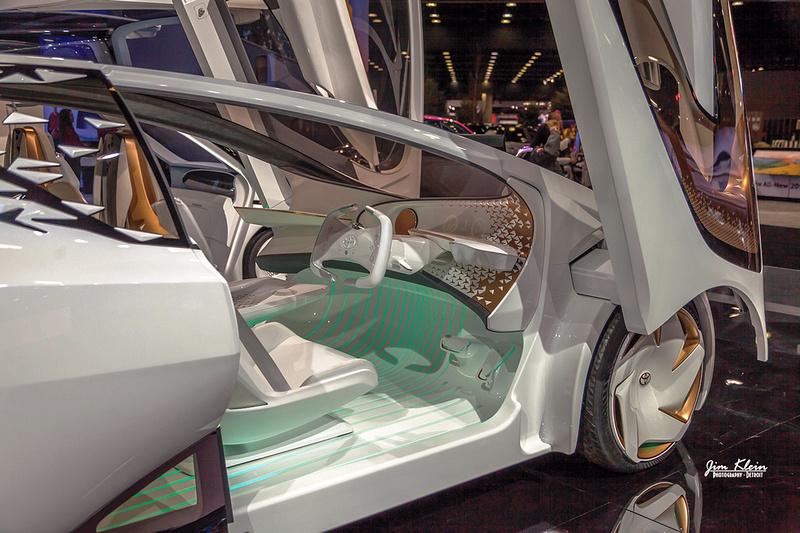
Photo Credit: Jim Klein, Cathleen Francois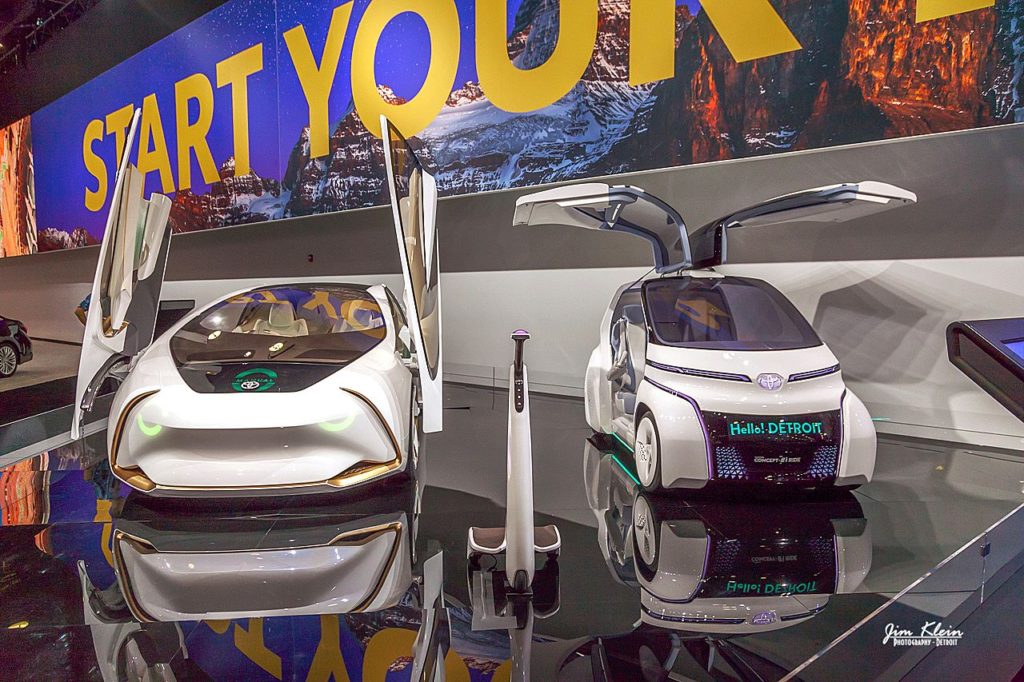
Photo Credit: Jim Klein, Cathleen Francois
This small gullwinged Toyota iRide VR is easily accessible for 2 passengers. With voice recognition, activation and interactive dashboard, one could argue that talking KITT from Knight Rider (1982) is the father.
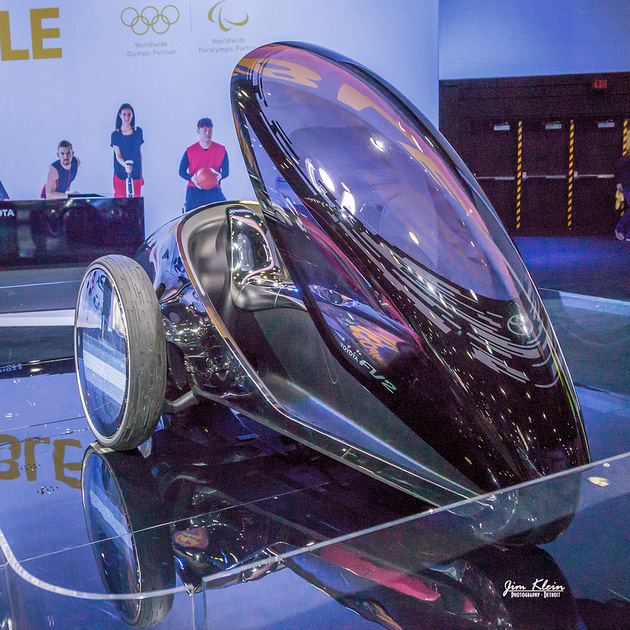
Photo Credit: Jim Klein, Cathleen Francois
In 1995 Judge Dredd’s Lawmaster motorcycle futuristic self-driving motorcycle is regulated by AI and responds to verbal commands. In looking at the Toyota FV2 single seat concept, you may wonder how it maneuvers. It seems today’s new technology reacts intuitively with your body and is teaching cars to think.
The FV2 is billed as a “mood ring for the road.” Navigated by shifting your body forward, back and side to side, it can gauge your mood and interacts via an augmented reality screen on the windshield. It’s automated technology can understand the rider “intuitively” through sensing body heat and heart. The exterior color and patterns change based on the driver’s mood, too!
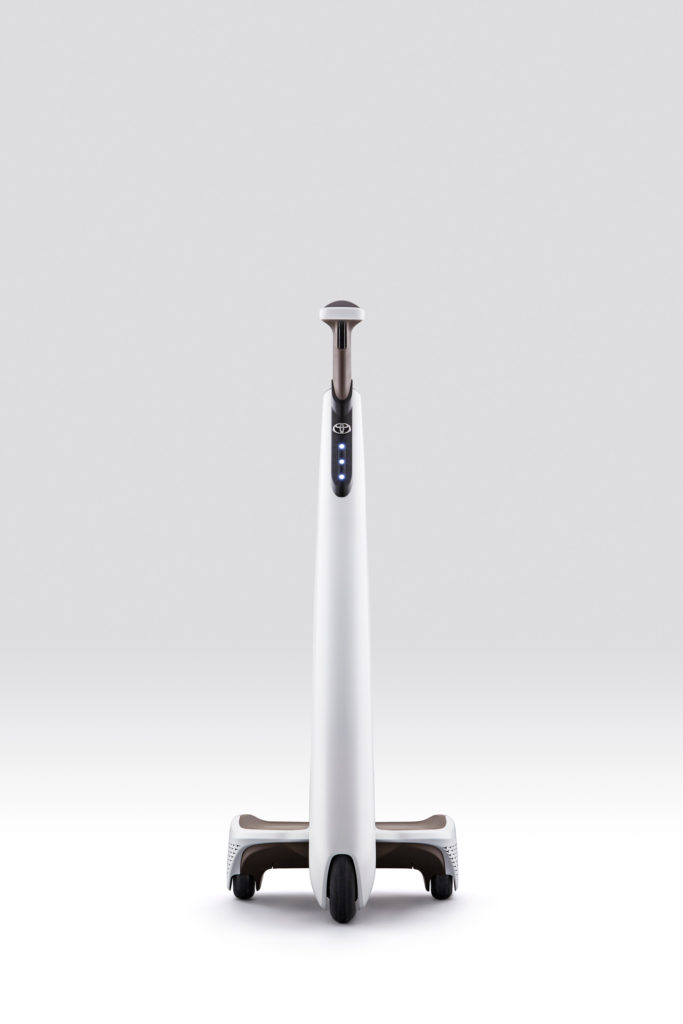
SOURCE: https://newsroom.toyota.co.jp/en/ 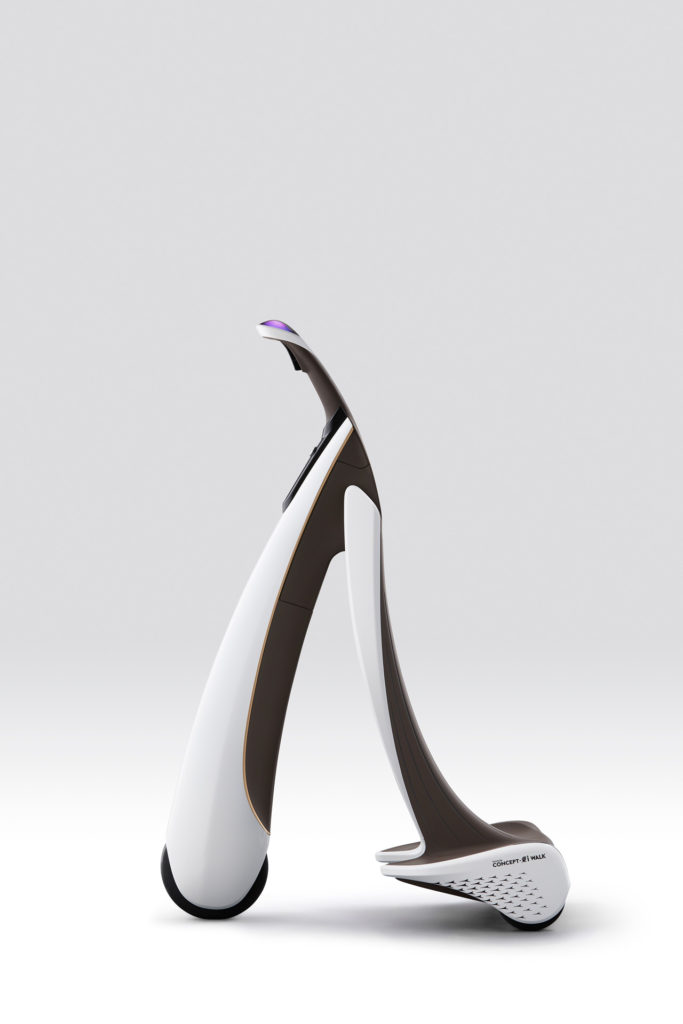
SOURCE: https://newsroom.toyota.co.jp/en/ SOURCE: https://newsroom.toyota.co.jp/en/
Nissan’s iWalk is a personal mobility device that anticipates obstacles and collisions. With a built-in projector for visual communication, the rider sees information on shop windows and has speakers for interactive voice communication. You can go 6-12 miles on a charge, lightweight and easy manageable device.
Shared Mobility // Autonomous Self-driving Vehicles
Our attitudes are shifting towards mobility and are changing in how people and goods move about. With a greater variety of transportation comes decreased ownership and usage which will greatly impact our environment.
In his 1951 Novel, Between Planets, Robert Heinlein predicted autonomous smart, car sharing vehicles. “The robot cab seemed to know where it was going and, no doubt, the master machine from which it received its signals knew.”
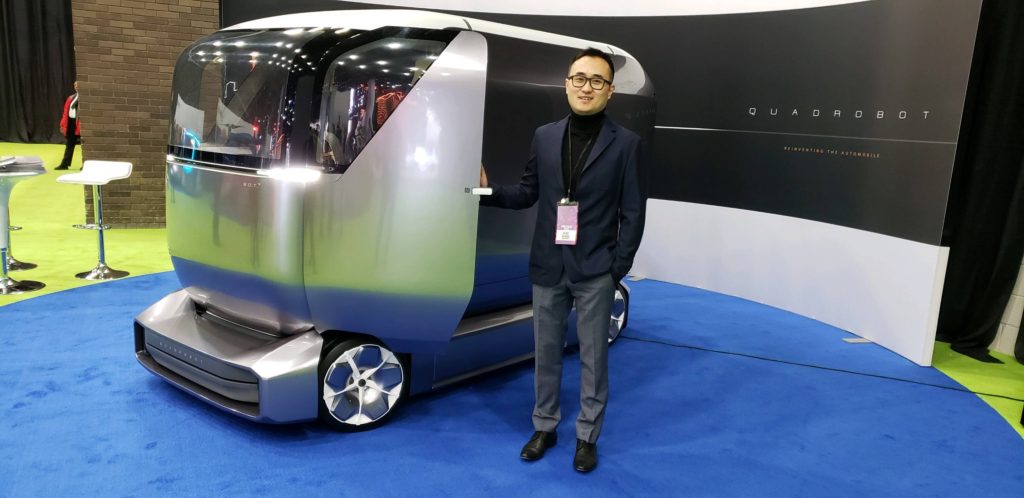
Mike Wang’s vision has come to life in an Airstream inspired all-electric autonomous Quadrobot delivery vehicle. Wang says “the future is technology that connects with people, everything can be synced and linked up.”
The Autonomous Smart Vehicle SVEN (Shared Vehicle Electric Nature)
is a small pure electric car-sharing vehicle designed for urban mobility. Connected to the internet, it interfaces with the public and personal transportation.
NAUVA’s shuttle cab already has 35 shuttles in operation around the world, with over 130,000 people having ridden safely in an Arma. Its sensors and software drives passengers on a predetermined course.
These smart cars just keep getting smarter.
Heinlein knew.
PlanetM
So, where is all the talent and workforce for sustainable mobility going to come from? In visiting PlanetM, you’ll see that this is were the excitement begins. PlanetM partners up mobility organizations, schools, R&D and government agencies to create new mobility technologies.
The trend in the workforce is that there is not enough education to ensure companies and technologies will be able to evolve. In partnering businesses up with schools get students interested early on with programs that help them see a future for themselves in tech. However, it’s not only in tech that moves us forward. But, business, marketing, engineering, and learn to work together vehicle systems, solar cells, too. Using hard and soft skills students join in the journey as a team in creating a better future all around.
Esther Schmidt of Washtenaw Community College feels empowered. She likes being part of a community that builds each other up and challenges each other “to work harder to be the best they can.”
Early remembrances of inspiration come from Inspector Gadget, Transformers and the accomplishment of building something out of nothing with Tinker Toys and Lego sets. Now, here they are helping to harness solar energy and design self-driving race cars.
In all things that move people, there is a shift in the workforce. The fear that jobs as we know them will go away luckily will be replaced with new ones. The jobs of tomorrow don’t even have a title because they aren’t even invented yet. In meeting with the bright minds that are motivated towards future sustainability, I have no doubt the students have got it covered.
Until next time, beam me up, Scotty.
Birgit Keil is a teller of stories. An observer of life. Her combined talents and background gives Keil the unique edge of lateral thinking, that’s where the magic of unexpected connections happen and ideas become reality. Keil has the ability to articulate complex concepts and marketing ideas in simple terms that compel interest and generate action.


